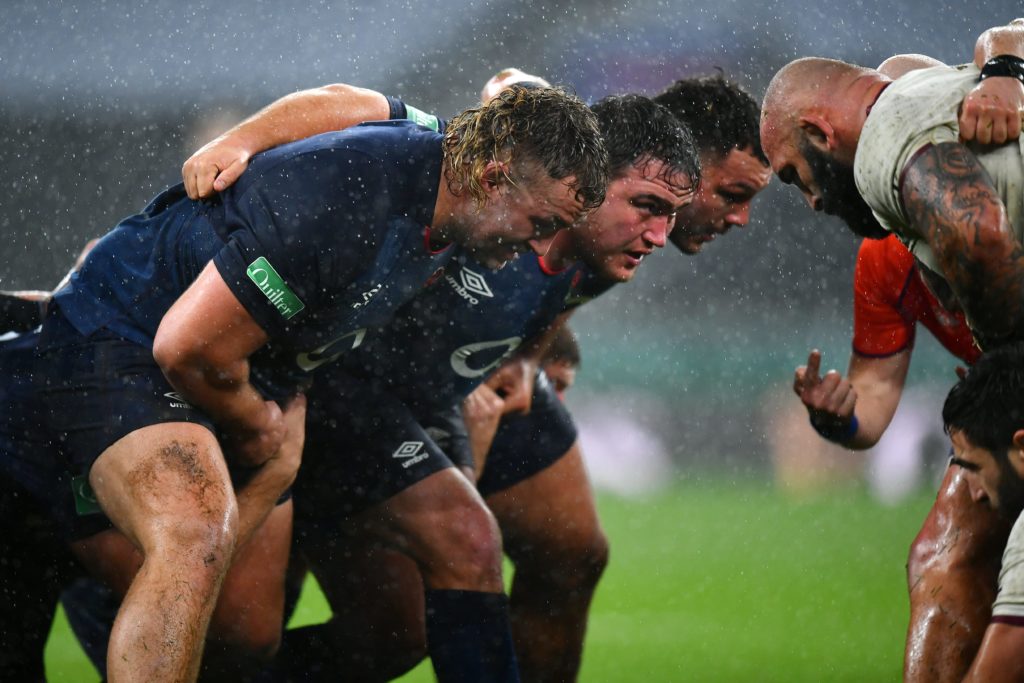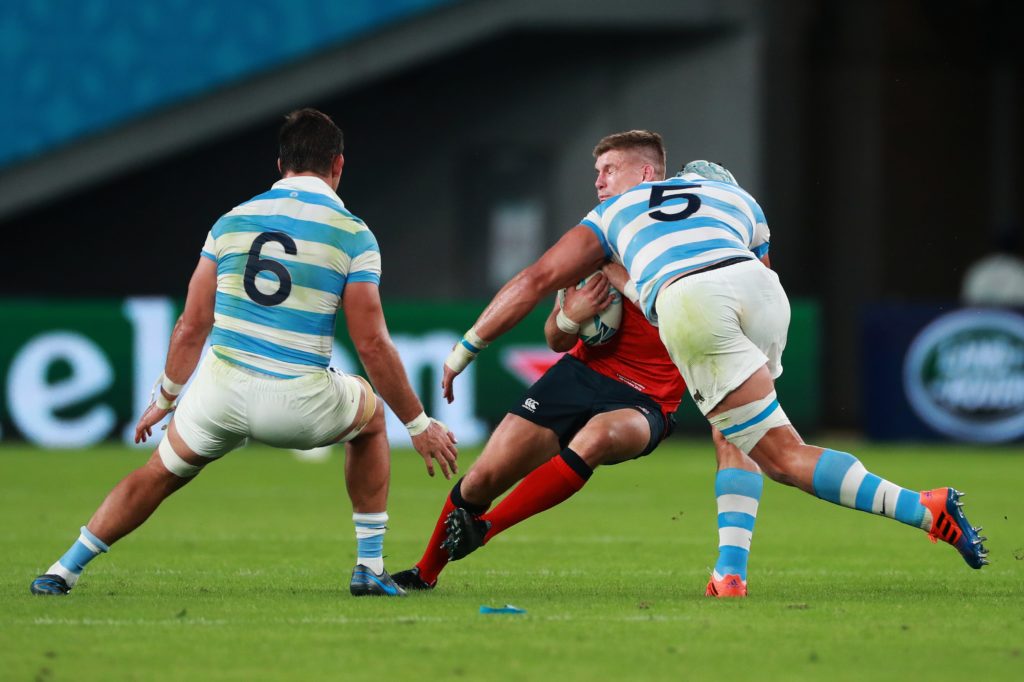It seems rugby continues to be buffeted from all sides by people dissatisfied with its current dynamic. We at The XV have already contended that, in terms of the product on the field, rugby has never had it so good. No one should ever fall into the nostalgic trap of thinking the way the game used to be is a spectacle to yearn for. Watch the full 80 minutes of a club or international game from the 1970s if you’re looking for reasons to weep. Even at its worst, rugby is miles away from that now.
That’s not to say things could not be improved. At all times, though, it is important to bear in mind the above aphorism. Anyone who thinks we are at a new crisis point in the game’s history is wilfully ignoring that history. Rugby folk are almost always fretting about the state of their game. No sport has ever tinkered with its laws more. Which means that every problem we wrestle with now is here because of previous law adjustments and their unintended consequences. So, yes, be careful what you wish for. We must caveat all that follows with that truth of human existence.
Rugby’s problems currently stem from the feeling, heightened by professionalism and now television, that there is great pressure to find favour with the casual viewer who must be kept constantly entertained lest they switch over. This is a very real problem, but a sport with any self-confidence (so, not rugby union) must at least offer some resistance against that by remaining true to its soul. That is not easy.
So, let’s consider the usual suggestions regarding new laws and categorise them into three sections: ideas to dismiss, to explore further and to implement as soon as possible.
Rugby’s problems stem from the feeling, heightened by professionalism and now television, that there is great pressure to find favour with the casual viewer who must be kept constantly entertained lest they switch over.
First, the ones to dismiss.
No 1: Make the pitch bigger
In an ideal world, we would have adopted this long ago. Today’s professionals are faster, bigger, fitter and more skilful than yesterday’a amateurs – but the pitch has never changed size. Obviously, there is less space nowadays relative to when rugby’s rudiments were being thrashed out in the 19th century. But, unless we are prepared to pull down every stadium that hasn’t got an athletics track and start again, expanding the pitch is not a practical solution. So, how about…
No 2: Reduce the number of players
Here we are into one of the fundamental problems. None of this is new. Rugby has been here before and found an answer to the problem of what happens to it when a commercial imperative is introduced. The solution? Rugby league. So many of the familiar suggestions – shifting the emphasis away from the set-piece; increasing ball in play; reducing numbers – have already been adopted by league. Some might go so far as to suggest that union just do away with itself and accept the reality that becoming league is the answer to most of its problems. There are some folk in both codes who would not fear such a move. But there are enough fiercely protective of union’s soul, many of them in positions of governance, who would rather sell off a Pacific Island than countenance a fusion with league. A first step towards such a fusion would be to dispense with union’s flankers. Quite apart from the fact this would mean some of union’s greatest players no longer having a place, one has to assume this dramatic step will be resisted for at least the foreseeable.
So let us next consider some ideas worth exploring.
Before we do, another tension at the heart of all this is that between entertainment and player welfare. Some commentators, in press and public, are in danger of straying into the sort of hypocrisy on this that is so ingrained in union’s history, one minute demanding they be better entertained, the next demanding the players be less relentlessly flogged. The trouble is, those two ideals are in opposition to each other. You want more ball in play? Here are more collisions. You want to speed the game up? Here are bigger hits.
Bearing all that in mind, then, can we consider?
No 1: Reduce – or eliminate – tactical subs.
There is a lot to be said for this. And for remembering that the introduction of tactical subs in 1996 was the result of the sort of fudge of which union officials are so fond. Much as they introduced professionalism in the first place because they knew everyone was being paid anyway, so they responded to the widespread knowledge that injuries were being faked for strategic purposes (no, Bloodgate really wasn’t the first example of this) by just giving in to it, with huge repercussions. It is a bit like legalising speeding on the basis that everyone does it, so what the hell.

Now it is the norm to replace more than half the team, which feels dangerous apart from anything else. Certainly, it seems unfair if one side is getting the upper hand, be it at scrum or in the loose, only for the other to bring on reinforcements. Keep the players on, runs the argument. Tired players means more space, more mistakes. But it also means more wear and tear on fewer players. It means a greater primacy on fitness and athleticism over set-piece heft, a further shift towards identikit athletes throughout a team, who can run and smash all day. Expect a further withering of the set piece…
No 2: Stop the clock for scrum formation
This measure is never far from anyone’s lips and represents as neatly as any union’s acute sense of embarrassment at its own calling card. The scrum. In it we might see union’s soul. In the old, old days, the scrum, or melee, was not just union it was football, full stop. But, where most codes of football quickly shed this arcane ritual, rugby (both codes) has clung on. Without the scrum as a significant feature (and the line-out), union has no point. Another step towards league. Union’s very positions owe their names to where each player lines up at scrum time.
It is beautiful and poignant that union agonises over its scrum, just as its scrum defines union. For the sport ever to come to terms with itself, it needs to get over this sense of shame. That said, it is true that the endless resets are a bad look, and in some quarters – Australia, for example – viewers just turn over.
A compromise might be to set a time limit of, say, a minute for the formation of each scrum. Free-kick against any team dallying. To stop the clock would be to send matches sailing past the two-hour mark in real time, with genuine repercussions in some cases for practicalities like getting home afterwards, or to the pub.
To stop the clock would be to send matches sailing past the two-hour mark in real time, with genuine repercussions in some cases for practicalities like getting home afterwards, or to the pub.
It would also extend significantly the amount of time the players spend smashing into each other relative to the very sensible respite scrum time affords everyone. In league, just about the only point of the scrum is to give the players a breather while it forms. Union’s, though, for all its ills, continues to wield great influence on the course of each match. It must be preserved at all costs.
Union’s other great point of distinction, intimately linked to the sanctity of the set-piece, is the utopian ideal that it is a game for all shapes and sizes. This is fundamental to its depth, its changes of pace, the variety of the paths to victory. Yes, this does lead to phenomena that are less obviously easy on the eye, but there comes a point when a sport must stand firm against the tyranny of consumer culture.
There is much majesty in a scrum and in a maul. Any attempt to suggest that these factors are less desirable than the sexier virtues (like the idea of increasing the value of a try scored from long range) is to suggest some players are more valuable than others, which would be to initiate the unravelling of union’s fabric. Take away the set-piece, you take away the game’s soul.

Hence, some of the measures rugby might implement immediately.
No 1. Banning lifting at the line-out
This would be to compromise one of union’s most telegenic routines, the synchronised rising of players to the catharsis of securing a tiny ball above their heads, but at least it would lend more value to the simple virtue of being tall.
All too many teams these days chuck back-row forwards into the second row, knowing they can fling them high enough to ride out any other shortcomings. The more being tall can be valued over athleticism around the park, the more rugby stays true to itself. The same logic applies to the ‘less athletic’ scrummagers. Keep their specialism as important as possible. With so few scrums now, we should not mind that dominant ones (but only clearly dominant ones) are rewarded with penalties.
No 2. Under no circumstances, ever, send a prop to the sin bin for being out-scrummaged
Never does union reveal itself as so hopelessly confused as over this. Such is the embarrassment over repeated scrums that officials have struck upon the brilliant ruse of penalising a dominated scrum still further by reducing its number, as if that is going to help. No other sport dismisses players for being, essentially, not as good as their opponents at something.
Everyone knows when the referee calls the dominated front row over for one last lecture about all the norms they are supposedly violating that at the next play there will be a yellow card. It’s not because the players in question are being naughty; it’s because they’re being out-played. And it is going to happen the next time too.
No other sport dismisses players for being, essentially, not as good as their opponents at something
Imagine a referee calling over a winger to complain that he’s being beaten on the outside every time his opponent gets the ball. Imagine the conversation: “I want you to get tighter on your man and run faster or you’ll leave me with no option.” Penalise dominant scrums, by all means, including with penalty tries – but keep the players on the pitch.
No 3. Lower the tackle height
There is one other area where rugby abuses the logic of sport by sending off – this time often with red cards – players for, at best, failures of technique, at worst, situations they have no chance of avoiding. Don’t let anyone tell you they have changed the law regarding high tackles.
The height of a legal tackle is the same as it has always been. They have merely changed the punishment. It is another hypocrisy, rugby choosing to blame honest players for the reality that in this sport heads get knocked again and again, rather than to change the actual law.
It is true that to lower the height of a legal tackle would be to open the sport up to all sorts of complications, not least a burgeoning penalty count and the loss of one of early professional rugby’s favourite phenomena, the Trevor Leota-esque chest-high smash, but at least it would keep the pressure on players to keep their tackles low without the pressure on referees to send them off if anything goes wrong (like an opponent, inconveniently moving at the last split-second).
A lowering to the waist of the legal tackle has been trialled extensively in France, and the noises are encouraging. It won’t stop high tackles, just as it won’t make much difference to rates of concussion, but it could mean that the only players sent off are those guilty of clearly deliberate acts of foul play. Which is how it should be in any sport that treats its players with respect.

No 4. Crush the caterpillar
They tried this with some success a few years ago, implementing the ‘use it’ call, which gave the scrum-half five seconds to clear the ball from a ruck. However teams have now cottoned on to the fact that five seconds is actually plenty to set up this infuriating phenomenon. Easy to fix. Cut it to three seconds. Or, actually, no seconds at all.
No 5. Throttle the choke
Tricky to know how to outlaw the dreaded choke tackle, designed to force an attacking team into a maul and then a turnover, but it is an affront on aesthetic and welfare grounds. One way would be to remind referees that a maul can become a ruck if the ball is forced to the ground – all too often referees call scrum when the ball or players hit the deck. Another might be to allow the attacking team to retain possession if the maul is formed after a tackle (as opposed to a line-out).
Another again might be to remind referees that if a maul is collapsed by the defending team it is supposed to be a penalty to the attacking.
No 6. Hound out the jackal
This one feels replete with trouble – so one might say it should be in section two, worth further exploration – but the solution union needs most of all is some way to force players back into the ruck. Not allowing any player to handle the ball after the tackle feels the best idea so far. It might also address a significant welfare concern, the clearing out of players grappling for the ball.
The solution union needs most of all is some way to force players back into the ruck
At each tackle, the defending team’s go-to routine is to send in the first player to try to steal the ball. While he burrows away, the attacking team are forced to send in one, two, sometimes three players to clear him out, while the rest of the defending team take up position in the defensive line.
Attacking teams are thus numerically disadvantaged at the next phase, and so they plough into the next defender, and on it goes, the metronomic thud, thud, thud of the modern game. Without the jackal, the theory goes, the only way a defensive side can force a turnover, other than through a dropped pass or a kick, is to send more players into the ruck and attempt to drive the attacking side off the ball. The attacking side, theoretically, would also have to send more in to counter this. And so there might be more space to exploit when the ball comes back on whichever side.
It sounds simple. In reality, it almost certainly would not be (more players in the ruck will mean more boots to the head of prone players – see how that plays out with the PR police). Which means that, like almost every law change that rugby has ever instituted, it will bring with it side-effects that at any given moment in time will be the subject of furious debate, as if the game has reached a new crisis.
We can and will moan about rugby till the end of time. But remember ……. we always have.
Michael Aylwin’s book, Unholy Union: When Rugby Collided with the Modern World’ is out now in paperback: amzn.to/3oLv4UK
If you’ve enjoyed this article, please share it with friends or on social media. We rely solely on new subscribers to fund high-quality journalism and appreciate you sharing this so we can continue to grow, produce more quality content and support our writers.


Comments
Join free and tell us what you really think!
Sign up for free